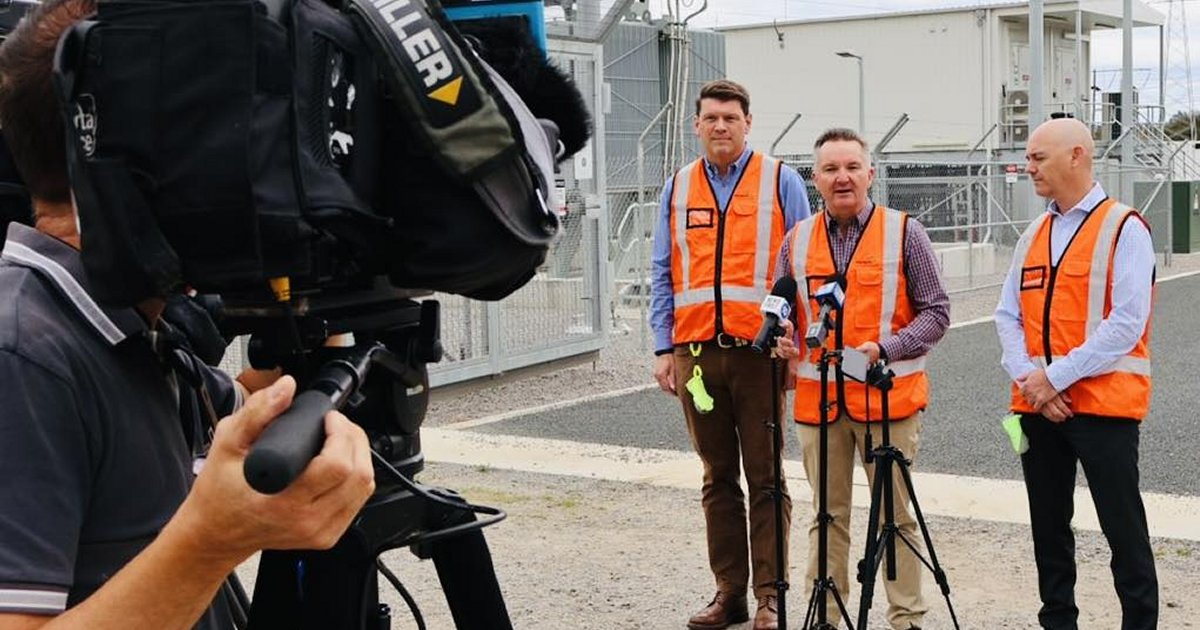
Buzz about batteries was again stirred up over the weekend by Federal Minister for Climate Change and Energy Chris Bowen. Here’s what’s happening.
Community Battery Rollout – Next Steps
One of the Albanese Government’s election commitments was a $200 million investment over four years to deliver large batteries to around 400 communities; part of Labor’s Powering Australia plan. Mr. Bowen went on a pledging spree in the lead-up to the election, promising a bunch of communities one of these batteries.
But there will be some hoops for these communities and their Distributed Network Service Providers (DNSPs) to jump through. On the weekend, Minister Bowen announced the release of grant guidelines for the first 58 batteries promised.
The guidelines have been released in advance of applications opening on 30 January 2023. Guidelines for the first two streams are available here (Stream 1) and here (Stream 2). Grants between $100,000 and $500,000 will be available per eligible location, providing $1,000 per kilowatt-hour (kWh) of battery storage capacity and up to 100% of eligible project expenditure.
As for the other 342 community batteries, the Australian Renewable Energy Agency (ARENA) will develop a program to deliver them after a stakeholder consultation process.
Commenting on the initiative, Minister Bowen said:
“One in every three Australian households have solar panels – the highest rate in the world – but far fewer have batteries to store their energy for later use. Community batteries can do this while also allowing stored energy to be shared with others who can’t install rooftop solar.”
More Bucks For Big Batteries
Also announced on Saturday was a $176 million dollar investment to support eight big batteries across the country under the Australian Renewable Energy Agency’s (ARENA’s) Large Scale Battery Storage Funding Round.
The new battery projects to receive funding:
- 250 MW / 500 MWh – Liddell, NSW (AGL).
- 250 MW / 550 MWh – Gnarwarre, VIC (FRV)
- 200 MW / 400 MWh – Hopeland, QLD (Neoen)
- 200 MW / 400 MWh – Blyth, SA (Neoen)
- 300 MW / 900 MWh – Mortlake, VIC (Origin)
- 200 MW / 400 MWh – Bungama, SA (Risen)
- 300 MW / 600 MWh – Mount Fox, QLD (TagEnergy)
Also included is a retrofit to Neoen’s 300 MW / 450 MWh Victorian Big Battery in Moorabool, which will enable grid-forming capability. The total value of all projects is around $2.7 billion.
“This investment looks to deliver around 2GW of dispatchable power, to ensure Australian households and businesses can count on the increasingly renewable energy they use being available when they need it,” said Minister Bowen.
The announcement was made at the site of the 50MW/75MWh Wallgrove Grid Battery (WGB) facility in Western Sydney (pictured above), which is now fully operational. New South Wales’ first grid-scale battery, the WGB has exported more than 23GWh of energy since starting operations and is now the first in the state to demonstrate synthetic inertia capabilities. The WGB project has also been supported with funding from ARENA.
What About Home Batteries?
Several states/territories offer home battery subsidies, but there’s nothing available at a federal level at this point in time.
There have been recent calls for Australia’s national solar panel “rebate” program to be extended to incorporate home solar energy storage; and it’s an idea that seems pretty popular with Australians according to results of a recent survey. But there’s been nothing to indicate the Albanese Government is considering this.

 RSS - Posts
RSS - Posts



What I dont really get is that with subsidy they can get me to pay for 3/4 to 1/2 of a battery (force me to share it for the subsidy of course). It must be vastly more efficient to go to large form and pay for the whole thing using government money.
The announced $176 million dollar investment into ARENA’s Large Scale Battery Storage Funding Round are not going to any GWh-scale projects, other than apparently a portion of the Liddell BESS project.
But I see more than a dozen apparently unsubsidised GWh-scale BESS projects for Australia that I see progressing (announced, in the planning pipeline, planning approved, or under construction), including:
* Wallerawang 9 (500 MW / 1.0 GWh),
* Great Western (500 MW / 1.0 GWh),
* Eraring (700 MW / 2.8 GWh),
* Waratah Super (700 MW / 1.4 MWh),
* Orana (200–400 MW / up to 1.6 GWh),
* Mt Piper (500 MW / 2.0 GWh),
* Wooreen (350 MW / 1.4 GWh),
* Melton (1,200 MW / 2.4 GWh),
* Robertstown (250 MW / 1.0 GWh),
* Goyder South (900 MW / 1.8 GWh),
* Bulli Creek (400 MW / 1.6 GWh),
* Supernode (800 MW / 2.0 GWh),
* Collie (1,000 MW / 4.0 GWh)
Add in the partially ARENA subsidised Liddell (500 MW / 2.0 GWh) BESS and that’s a combined capacity of 8,750–8,950 MW / up to 26.0 GWh of (GWh-scale BESSs) energy storage capacity possibly available in the next few years.
https://reneweconomy.com.au/big-battery-storage-map-of-australia/
And there are also some longer-term PHES projects in development: https://reneweconomy.com.au/pumped-hydro-energy-storage-map-of-australia/
We don’t have enough solar, wind, and energy storage to meet all demand at all times yet, but I’d suggest that day is approaching faster than some people may think.
That’s a whole lotta battery capacity in the pipeline.
It seems to me that a better approach would be to subsidise domestic battery and solar installs. This would save having to spend a fortune on wires and poles and free up grid electricity demand.